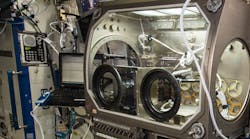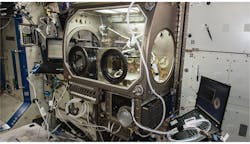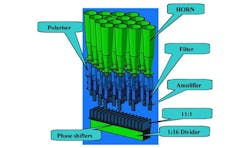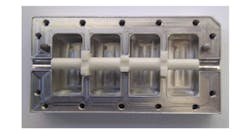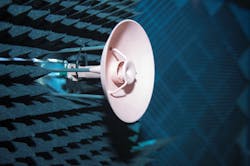Additive manufacturing, also known as 3D printing, enables the fabrication of objects through the deposition of material in order to obtain fit-for-purpose hardware. This differs from traditional subtractive processes, where material is removed from larger, semi-finished products. Like many new manufacturing processes, 3D printing arose from the merging of previously existing technologies: The coming together of computer-aided-design (CAD), inkjet nozzles, and automated machine systems.
Additive manufacturing includes a large family of processes and technologies and can be applied to a wide range of materials—ranging from metals and polymers to ceramics—as well as food, living cells, and organs. Today, AM is a standard manufacturing process in a significant number of industrial applications and high potential is anticipated (and in many cases, already demonstrated) in high-end technology sectors, including aerospace, turbine industries, and medical applications.
Additive manufacturing can also be adopted for in-orbit manufacturing onboard the International Space Station (ISS) for both plastics and metals. NASA has a plastic 3D printer on the ISS today (Fig. 1). In February 2016, the European Space Agency (ESA) and the Italian Space Agency (ASI) successfully proved on the ISS the “Portable On-Board Printer 3D” (POP3D; Fig. 2), as a technology demonstration for long-term manned exploration missions.
1. This image shows a 3D printer in the Microgravity Science Glovebox onboard the ISS.
As on the ISS, manned missions could carry 3D printers to ensure full self-reliance, as they fly for months or years from Earth with limited resources. No need to bring a significant amount of spare parts (which will probably never be used): A large spare parts stock can be replaced with a printer and powders of most common materials to be printed if necessary into the failed part. Alternately, on-demand tools can be manufactured in-situ to disassemble and fix malfunctioning units.
Industrial manufacturers of mechanical components for on-board space applications are catching onto additive manufacturing. 3D printers are already used for the realization of mechanical and structural parts for space applications. Less obvious so far has been the use of 3D printers to manufacture passive microwave components and assemblies.
This is an illustration of the POP3D, which was demonstrated successfully by the European Space Agency and the Italian Space Agency.
The European Space Agency, through development contracts with a number of European industries, has been pioneering the application of additive manufacturing for the production of microwave components. The adoption of this new manufacturing technology for the production of RF space components is justified by the increasing complexity of satellite payloads.
Future satellite communications payloads will require an ever-higher degree of flexibility in order to cope with evolving mission requirements and to allow reconfigurability, both in terms of traffic distribution and ground coverage. Active array antennas, either in the form of direct radiating arrays (Fig. 3) or that of array-fed reflectors, offer a high degree of reconfigurability in terms of traffic distribution and antenna footprint, while maintaining a full and effective freedom in the allocation of the available resources (e.g., RF power per beam in the TX section).
A simplified block diagram of an active direct radiating array antenna is shown here.
A satellite multi-beam active antenna is a rather complex subsystem that includes active components (low-noise amplifiers and power amplifiers) together with a high number of passive parts and components. This integration includes arrays of radiating elements, polarizers, filters, waveguide runs, couplers, and power dividers (Fig. 4).
This is an illustration of a satellite multi-beam antenna assembly.
The possibility of integrating in the same assembly different passive microwave components (e.g., feed arrays, beam-forming-networks, or filters) is particularly important in modern satellite payloads, often including complex multi-beam antennas. In these cases, the reduction in payload mass and cost can be dramatic. Mass reduction, optimization of the occupied volume, and mechanical interface reduction are very important in space applications, where mass and volume are critical. Moreover, the high number of interconnections and the complex waveguide routing can lead to problems in terms of passive intermodulation (PIM), thus limiting the power handling capability in multi-carrier regimes.
In terms of mass, it is worth noting that, while electronic devices lend themselves to miniaturization, electromagnetic structures (such as microwave filters) are strongly constrained by the laws of physics (e.g., wavelength, current densities, conductivity, and Q-factor). The application of additive manufacturing technologies to RF and microwave passive components has already proven a potential reduction of up to 50% in mass and more than 40% reduction in production time.
The European Space Agency is promoting in Europe a number of R&D activities on additive manufacturing of RF/microwave components and assemblies. One specific additive manufacturing technique, Selective Laser Melting (SLM), was applied to the implementation of bandpass filters, with the aim of reducing losses (high effective filter resonator Q) and achieving high dimensional accuracy (Fig. 5).
This bandpass filter was built by Selective Laser Manufacturing techniques.
With additive manufacturing, high-quality aluminium parts can be produced with an approach known as additive layer manufacturing (ALM). Using this technique, single-piece microwave components made from aluminum—including filters, couplers, and waveguide runs—were produced.
RF filters have been produced using optimized internal designs, where the sharp edges generated by the milling processes used so far have been replaced by performance-optimized smooth surfaces, which have tremendously simplified (and improved) the silver coating process required to further enhance RF characteristics. Mass has been reduced by 50% and the need for assembly is avoided, as the part is now manufactured in one piece (Fig. 6).
Additive Layer Manufacturing can used to build microwave filters.
More sophisticated additive manufacturing techniques actually allow passive microwave components, such as waveguide runs and filters, to be composed mainly of plastic (e.g., in a honeycomb structure). A final layer of highly conductive material (gold or silver, for instance) is then deposited onto the plastic core of the component, thus achieving the required electromagnetic (EM) performance.
Complex single-piece components can be produced in a short time and at a cost that is not only affordable, but also almost entirely independent of the number of items being produced. Moreover, almost arbitrary geometries and highly integrated assemblies can be realized, something otherwise difficult or impossible to obtain with traditional milling machine techniques.
Other promising additive manufacturing technologies being developed in Europe for future satellite missions (mostly at higher microwave frequencies) are ceramic 3D stereo-lithography and Surface Integrated Waveguide (SIW) technology, which could achieve mass and size reductions of up to 30% as compared to traditional mechanical structures. These technologies could be particularly suited for active antennas applications since they would also make filters easier to integrate into active modules.
Ceramic 3D stereo-lithography is a rapid prototyping technique used to fabricate 3D ceramic structures. As such, it can be advantageously adopted for the realization of RF and microwave components and antennas, with high dielectric constant ceramic materials. The technique can be, for instance, used to manufacture a dielectric resonator, its support, and its surrounding cavity (Fig. 7).
Ceramic 3D stereo-lithography is a rapid prototyping technique that be used to build RF/microwave components.
3D-printed antenna prototypes were developed for ESA by the Swiss company SWISSto12, employing a special copper-plating technique to coat the complex shapes. Figure 8 shows a complete antenna assembly. It incorporates a corrugated feedhorn and two reflectors—printed all-in-one in a polymer material—and then plated with copper to meet its RF performance requirements.
This image shows a 3D printed ceramic antenna assembly.
SIW technology aims to realize planar microwave cavities buried in a high dielectric constant ceramic substrate (e.g., alumina), by means of via-holes defining patterns of any shape. This technology tries to reach a compromise between traditional non-planar (waveguide or coaxial, for instance) filter structures, offering high Q factors but being difficult to integrate with active devices, and planar filter structures (e.g., microstrip), which are lower in Q but easy to integrate into active components.
With this approach, a non-planar waveguide structure can be transformed into planar form and it can then be integrated into any planar dielectric substrate together with (for example) MMIC devices. The technology is particularly suited for applications at higher microwave frequencies (Ka-band and above).
To summarize, the specific advantages of additive manufacturing techniques for space-borne microwave components and assemblies are:
- Quick turn-around of early prototypes
- Reduced delivery times in production
- Mass reduction
- High assembly integration
- Interfaces (flanges, connectors, cables, or waveguide runs) reduction
- Overall cost reduction.
Finally, additive manufacturing is likely to play an enabling role in future planetary exploration missions, such as the “Moon Village,” the idea set forth by ESA of a village on the Moon built by huge 3D printers and inhabited for months at a time by teams of astronauts (Fig. 9). In that perspective, replacement or new microwave components will be literally “e-mailed” from Earth and then 3D printed on site.
This is an artist’s impression of a “moon village.”
